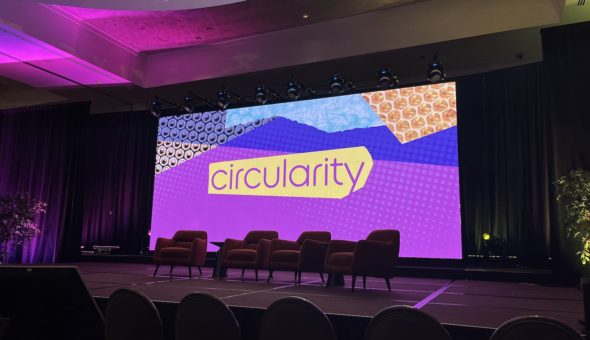The following blog comes from Andrew Hall, who between the 20th-24th September, attended the Small Molecule NMR Conference within the beautiful setting of Lake Maggiore in Northern Italy.
SMASH NMR is not something you do when your Nuclear Magnetic Resonance spectrometer is playing up and you’ve had enough, but is in fact the international NMR conference dedicated to the study of small molecules. This year one of the underlying themes was the use of NMR for reaction monitoring to enable the study of how chemicals change during the course of a reaction.
As my first international conference, I wasn’t exactly sure what to expect, particularly since this is a field that I am relatively new to. I quickly realised that the field of NMR spectroscopy extends far beyond the conventional image of the synthetic chemist scraping their meagre offering of prized compound into a glass tube and carefully dissolving in deuterated solvent that I was used to from previous encounters with NMR.
Talks at the conference ranged from highly sophisticated, multi-dimensional studies of complex mixtures of chemicals, performed using very large magnetic fields, all the way down to cutting edge, lab-on-a-chip NMR technologies. I found these new developments in miniaturisation particularly interesting, with the potential to shrink machines the size of a room down to an instrument that can fit onto a lab bench, or even be inserted into chemical reactors or oil wells to carry out in situ analysis.

With reaction monitoring as one of the key themes in the conference, as well as a focus of my own research, it was very interesting to see how different groups had approached the problem of studying samples which are continually changing. In particular I found it very interesting to hear about how different methods could be combined to give information that is not possible using any one technique alone.
Aside from the structured talks and workshops, I found that I learnt a lot simply by talking to other attendees at the conference, both at the poster sessions and informally during breaks. In particular I found it very interesting to talk to some of the other students present at the conference, and to discuss how the field is developing with the shrinking size of instruments and the introduction of new methods for reaction monitoring.
Overall I enjoyed the conference greatly and feel I learnt a lot - it has given me lots of ideas for new techniques to try in my research. I was also able to make lots of useful contacts and had many interesting discussions with other attendees - in many ways these conversations were at least as important to in furthering my understanding of the subject as the talks themselves.
And the venue? The banks of the beautiful Lake Maggiore in Northern Italy; because NMR spectroscopy is all about the relaxation!

Andrew is working towards his PhD on "Biogenic Alcohols and Sugars as Sustainable Reductants: A Combined Spectroscopic and Theoretical Approach to the Development of New Homogeneous Catalysts for Dehydrogenation, Hydrogen Transfer and Reverse Water-Gas-Shift Chemistry" with Dr Ulrich Hintermair, Dr Antoine Buchard and Dr John Lowe.
Respond


